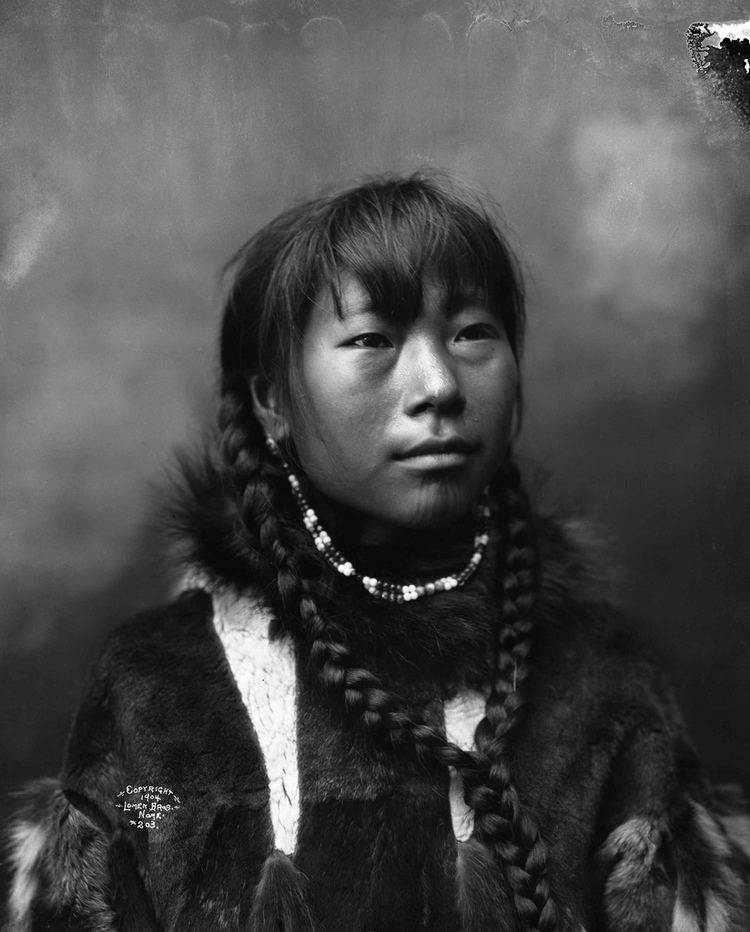 | ||
Climate change impacts on inuit women s health
The Inuit are the most widespread and perhaps the best known aboriginal people on earth. As a very large indigenous group inhabiting the Arctic regions of Alaska, Canada, Greenland, and Russia, the Inuit exhibit many variations in cultural practices and customs.
Contents
- Climate change impacts on inuit women s health
- Family structure and marriage
- Food production and preparation
- Children reproduction and motherhood
- Other responsibilities
- Sexual division of labour
- Lack of power and influence
- Effects of modernization and change on Inuit women
- New role in the culture
- Changes in status and power
- Health issues
- References
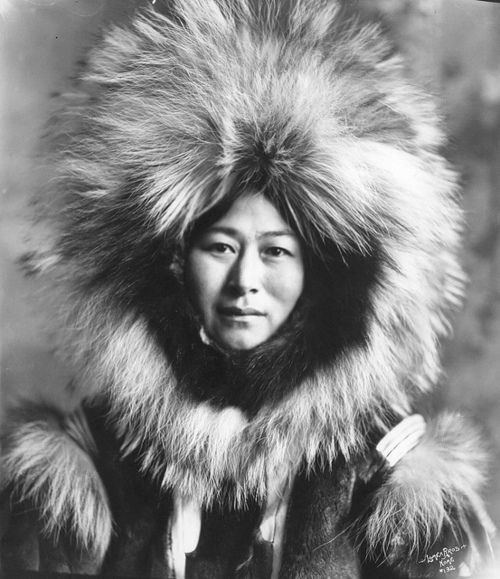
In Inuit communities, the women play a crucial role in the survival of the group. The responsibilities faced by Inuit women were considered equally as important as those faced by the men. Because of this, the women were given due respect, but are not given an equal share of influence or power.

Recent modernization and urbanization has transformed traditional Inuit culture and influenced the role of women within the culture. These changes include both positive and negative impacts on the overall well-being of Inuit women.
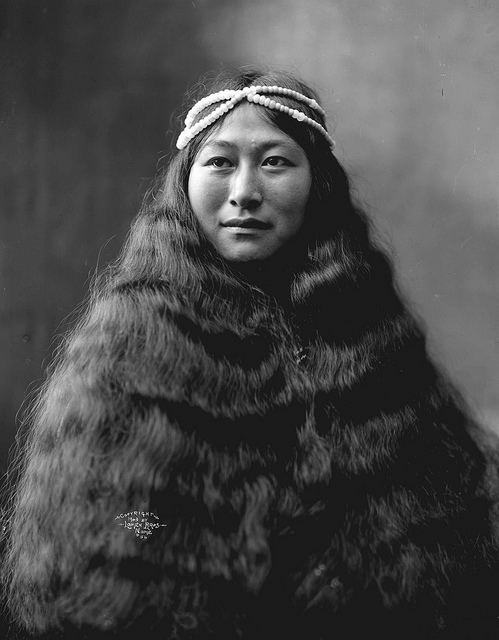
Family structure and marriage

In Inuit culture, marriage was not a choice, but a necessity. Inuit men and women needed each other to survive. Married couples had to work together to overcome nearly impossible living conditions. Because every individual had to rely on a partner to survive, marriages were often arranged at birth to ensure the survival of the family. Love marriages, or choice marriages, existed, but these were all but arranged because there were usually few eligible partners. A young woman was eligible for marriage after puberty, but a man had to prove he was efficient enough in hunting to support a family before he could marry.
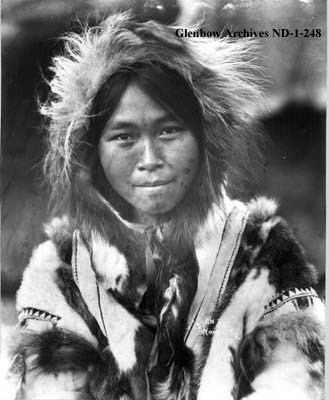
Inuit marriages rarely included large ceremonies; couples were often considered married after the birth of their first child. There were monogamous and polygamous marriages, but polygyny was rare because few men could afford to support multiple wives. Families exchanged gifts before marriages, but no official bride price or dowry was paid. Although men were considered the head of the family, both genders could demand a divorce. However, divorce was frowned upon because it was bad for the family and the community as a whole.
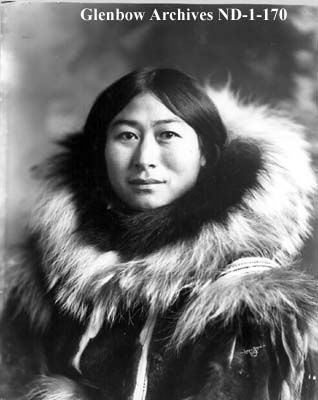
Spouses were sometimes traded or exchanged, and women had some say in this process. This was a common alternative to divorce because neither family would be without a component vital to its survival — a mother and a wife. In Inuit culture, the family was typically represented by a kudlik (lamp) or a hearth, which was the property and responsibility of the wife. This lamp had significant symbolic meaning in the family, the community, and the culture.
Food production and preparation
Hunting and fishing were the primary sources of food for the Inuit people, and men were traditionally responsible for these duties. Women's duties included gathering other sources of food, such as eggs and berries, and preparing the food the hunters brought back. Seals, walrus, whales and caribou were the most common targets of Inuit hunters. Animals killed by the hunters needed to be butchered and frozen quickly, before they went bad or froze before being butchered. Women were traditionally responsible for the butchering, skinning, and cooking of animals taken by the hunters.
In Inuit culture, it was believed that the women's respect for the animals killed during hunting trips, and subsequent care when butchering them, would ensure successful hunts. Food, as well as other resources, were often shared throughout the community as needed. Women were in charge of the distribution of food to families in the community.
The Inuit moved with the seasons to maximize their chances of a successful hunt; their entire families often moved with them. Because of this, tools and other items used by the Inuit for hunting and food preparation had to be light and easily transported. Among some Inuit groups this led to the development of complex tools such as light and powerful metal harpoons and wood stoves, which were being used by the late 1800s.
Children, reproduction, and motherhood
Childbirth and childcare were two of the most important responsibilities for an Inuit woman. Inuit parents showed a very high level of warmth and affection to their children. Inuit children usually began to contribute to the family and community by the age of 12 through activities like picking berries and hunting small game. During this period, they learned skills from their parents through close observation. Learning through observation was the chosen method because it was not practical for children to practice their skills by sewing valuable skins or accompanying men on important hunting trips.
Women raised boys and girls. Men taught boys certain skills, such as hunting, and women taught girls certain skills, such as sewing. Children were named after family members, often ones who recently died. There were no boys and girls names in Inuit culture, so it was common for a girl to have the name of her grandfather, for example.
Children were taught at a young age to listen to their parents and respect their elders, and were treated with more autonomy than non-Inuit children. Over disciplining a child was seen as counter productive so children were rarely punished for transgressions. Learning was regarded as a partnership between child and adult, with children being more guided through life than directly taught or lectured.
Adoption was very common in Inuit culture, and it was often very informal. Unwanted babies, or babies a family could not support, could be offered to another family. If the other family accepted, the adoption was complete.
Infanticide was common when conditions were desperate and the group was threatened by starvation. A mother abandoned an infant in hopes that someone less desperate might find and adopt the child before the cold or animals killed it. The belief that the Inuit regularly resorted to infanticide may be due in part to studies done by Asen Balikci, Milton Freeman, and David Riches among the Netsilik, along with the trial of Kikkik. Children who could not be supported by a community due to a lack of resources were often killed as infants. This was seen as best for the culture and prevented the suffering of other family members.
Other responsibilities
Along with childbirth and childcare, women were responsible for sewing skins to make clothes; preserving, processing, and cooking food (as mentioned above); caring for the sick and elderly; and helping to build and take care of the family's shelter. Warm, light, and serviceable clothing was perhaps the greatest achievement of the Inuit. For protection against the bitter Arctic winter, it has not been surpassed by even the best modern clothing.
The clothing created by women was vital because life in Arctic conditions was not possible without extremely well-made clothing to protect from the bitter cold. The clothing was created by the careful sewing of animal skins and furs using ivory needles, which were highly valuable in Inuit society. The process of preparing skins to be sewn together for creating clothes was done by women and was an arduous task. Skins had to be scraped, stretched, and softened before they were ready to be sewn.
In addition to this, the households Inuit women were expected to help construct and care for could range from igloos, to semi-subterranean sod houses, to tents in the summer months. This required an understanding of complex architectural concepts, as well as the principles of insulation. A good amount of strength was required to construct Inuit shelters. Because of this, Inuit women often worked together and enlisted the help of men to build their homes. For both practical and social purposes, these houses would be built close together or were made large enough for more than one family to live in.
Sexual division of labour
Jobs in Inuit culture were not considered men's work or women's work, but the Inuit did believe in men's skills and women's skills. For example, hunting was generally done by the men. Sewing clothes, cooking and preparing food, gathering food outside of hunting, and caring for the home were generally done by women. This does not mean that women never hunted, nor that men never helped with other jobs. This was just how the work was traditionally divided.
Women hunted and boated for enjoyment or when food was scarce and the community needed extra hunters. Men and women worked together to create a functioning culture. The men would not be able to go hunting without the warm clothes the women sewed for them, and the women would not have enough food without the meat the men brought back from their hunting trips.
Because of this, the work done by women received equal respect to the work done by men. While men and women generally did different work, one type of work was not considered better or more important than other types. It is easy to think that because men only had one job that they did less work. The truth is that hunting was extremely physically demanding and time consuming, and often required traveling for days or weeks at a time. As a result, the sexual division of labour in Inuit culture was relatively equal in the amount of work done.
Lack of power and influence
While women were respected by men, and often treated as equals, they did not have equal power in the community. Important decisions, such as when to migrate and where to, could be made exclusively by men. Inuit people had as little government as any group on earth, but some groups did have tribal councils or groups of elders who made decisions for the community. These councils were almost exclusively male.
Because of this, the Inuit women had little to no say in some of their communities' most important decisions. Men usually had the final say in issues such as arranging marriages and adoption or infanticide, which have a huge impact on women's lives. Although women had a relatively high position socially, and had significant control of their own home, as well as ceremonially important jobs such as lighting and tending to lamps and distributing food, their power was usually limited to those areas.
In addition to this, if men were unhappy with how a woman was handling her responsibilities, they could take over or transfer her work to another woman in the community whom they considered more capable. With women having less power, they are often put in difficult positions when they are not involved in the decision-making process. For example, a pregnant woman, or a woman with a newborn child, may not be able to migrate hundreds of miles through Arctic conditions in search of better hunting grounds. Factors such as these are rarely taken into account when men are the sole decision-makers for a community.
Effects of modernization and change on Inuit women
After contact with other cultures, the Inuit were introduced to new technologies and modernization, which changed their lives drastically. The Inuit are now a modern people and, like almost all indigenous peoples, no longer live the way their ancestors did. This is especially true of Inuit women.
New role in the culture
After modernization, the Inuit began to move into Arctic towns and participate in wage labor, government employment, community councils, and the acquisition of modern clothing, housing, and vehicles. Male Inuit initially took the lead in assimilation by learning the language of the arriving culture and taking on modern, wage earning jobs; however, a lack of education began to hinder the men's ability to find and keep jobs.
As a result of this, women began to lead the way in cultural assimilation. Women started by finding work as domestic servants, store clerks, hospital aides, classroom assistants, interpreters, and in weaving and knitting shops. Inuit women tend to go to school more than Inuit men, and this is especially true of college. Some universities in regions where the Inuit are prominent, such as the Nunavut Arctic College, have programs designed specifically for the Inuit people. Women, much more often than men, take advantage of these programs.
Because Inuit women seek more education and, subsequently, better jobs, they have increasingly taken on the role as primary wage earner for the family. This has caused men to assume responsibilities in the house that were traditionally done by the women, such as raising children and keeping the home in order.
Changes in status and power
The "role reversal" that has begun to occur in Inuit society has given women a major increase in power and influence. Women have begun to seek more power for themselves, both in decision-making in the family and the culture as a whole. As the primary wage earners, working women are now considered the heads of their families and have the upper hand in making decisions for them. This has complicated the relationship between Inuit men and women. Men have begun to resent women for "stealing their rightful place as the head of the family" and may turn to drinking and/or drug abuse to deal with these issues.
Reactions such as these perpetuate the cycle, as men are less likely to be employed after exhibiting these behaviors. Another change that has begun is that Inuit women have increasingly started to run for political office. Although the positions they seek are often at the community and local levels, this increase in activism reflects the new confidence Inuit women have found in the modern world.
Studies have shown that Inuit women prefer life in the modern world to the old ways. In addition to this, studies have found that, with the exception of sewing, which they enjoyed, Inuit women find their new jobs more satisfying. All things considered, the transition to life in the modern world has empowered Inuit women and improved their status in their culture and outside it.
The second premier of Nunavut was a woman, Eva Aariak, who was one of two female MLAs in the Legislative Assembly of Nunavut. The current mayor of Iqaluit, the capital of Nunavut, is a woman, Elisapee Sheutiapik, as is the Member of Parliament for Nunavut, Leona Aglukkaq, who is also the Canadian Minister of Health.
Health issues
Scientists have found that the Inuit people seem to experience more illness and health issues than other groups, especially the women and children, and especially in the post-modernization period. A possible explanation is that the Inuit diet was traditionally high in fat and protein and low in fruits and vegetables. However, this does not explain the increase in health issues after modernization, as the Inuit people eat more fruits and vegetables than they traditionally did.
More likely explanations include a change in diet after modernization, a decrease in physical activity as traditional jobs such as hunting and constructing homes are practiced less and less, or exposure to alcohol, tobacco, and other drugs. Whatever the cause, diabetes, heart disease, and high cholesterol are serious problems for the Inuit people. Even more troubling, studies have shown that these issues are worse for women than other groups.
Another major issue facing the Inuit is that, after modernization, suicide, violence, depression, and substance abuse have become increasingly prevalent. This may be the result of psychological issues stemming from not having a place in society or being torn between modern life and the culture of their ancestors. Sadly, suicide, depression, and substance abuse are increasingly becoming associated with Inuit women.
The pressure for Inuit women to conform to the dress and behavior of modern Western culture is immense; however, many aspects of modern culture are foreign to the Inuit women and are directly at odds with the traditional practices of their culture. Contemporary Inuit women are trapped between cultures, and the results are devastating to their physical and psychological health.
